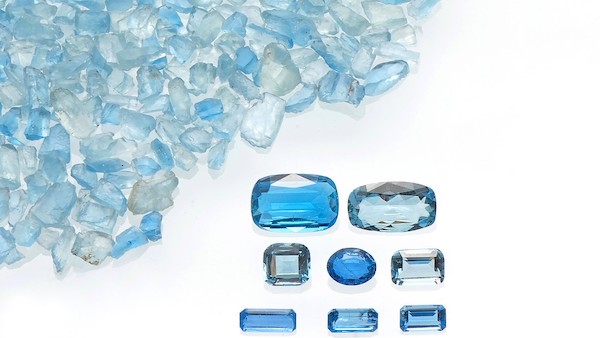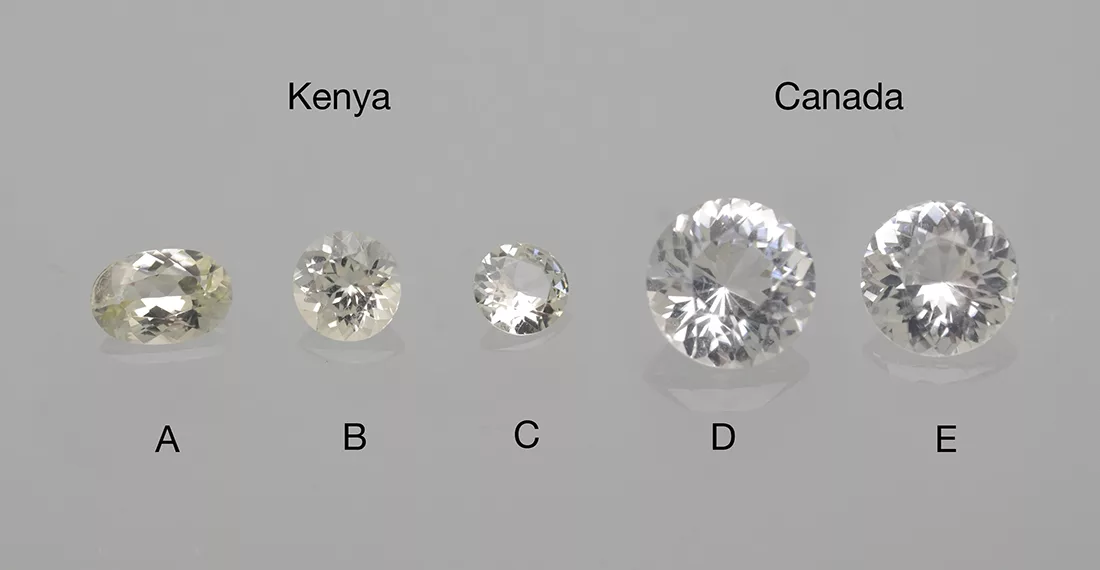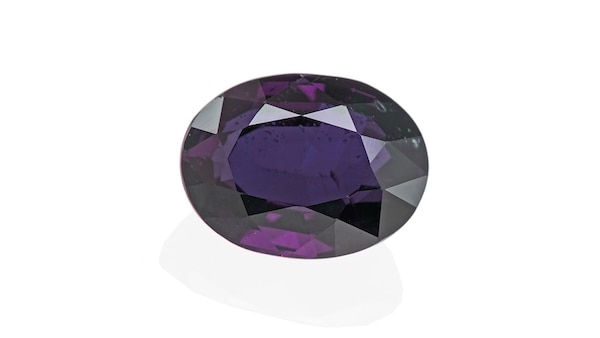
Afghanite from Badakhshan in Afghanistan
By Dr. M.S. Krzemnicki, first published in Facette 29 (May 2024)

Afghanistan is known since ancient times as source of exceptional gems, namely lapis lazuli, tourmalines, beryls, rubies and spinel (Bowersox & Chamberlin 1995). Apart from these rather classic gemstones, Afghanistan is also source for numerous rare collector minerals, such as väyrynenite, triplite, bastnäsite, purple diaspore, sodalite and its tenebrescent variety hackmanite, to name a few (see for example SSEF Facette 2023, page 38).
One of these rare collector stones is afghanite, a complex hydrated silicate, first discovered and described in 1968 from the famous lapis lazuli occurrence of Sar-e-Sang in the Badakshan Province in northeastern Afghanistan (Bariand et al. 1968). Forming whitish to dark blue trigonal crystals, only a small amount of this material is of gem quality and as a consequence faceted afghanite has only been reported in small quantity and sizes over the years.
Recently, the Swiss Gemmological Institute SSEF received an outstanding series of faceted afghanites from Sar-e-Sang together with a larger parcel of rough stones (see Figure 1). These stones were characterized by an attractive colour and exceptional clarity and remarkable size (up to 4.2 ct), thus more than double the size of the largest faceted afghanite of 1.91 ct described so far in literature (McBride, 2018).
Classic and advanced testing of this material revealed its uniaxial positive optical character, a RI of 1.520 to 1.530, with a birefringence of +0.006, and a distinct pleochroism from nearly colourless to blue, all findings well in line with reported afghanite data from literature. Under a longwave ultraviolet lamp (LWUV) all our samples showed a characteristic strong orange fluorescence reaction whereas the reaction in shortwave ultraviolet (SWUV) was weaker and more reddish orange (Figure 2). No tenebrescence (reversible colour shift) was observed in all our samples. Chemical analyses (EDXRF), FTIR, Raman, and UV-Vis absorption spectroscopy further confirmed the identity of our samples as afghanite of exceptional colour and transparency.
A gemmological short note about this material is published in the coming issue of the Journal of Gemmology (Vol. 39, No. 1).

References
Bariand P., Cesbron F., Giraud R., 1968. Une nouvelle espèce minérale: L’afghanite de Sar-e-sang, Badakhshan, Afghanistan: Comparaison avec les minéraux du groupe de la cancrinite. Bulletin de la Société Francaise de Minéralogie et Cristallographie 91:34-42.
Bowersox , G.W., Chamberlin, B.E., 1995. Gemstones of Afghanistan. Geoscience Press, Tucson, USA, 280pp.
McBride H., 2018. Large faceted afghanite. Gems & Gemology, 54 (2), 206.


